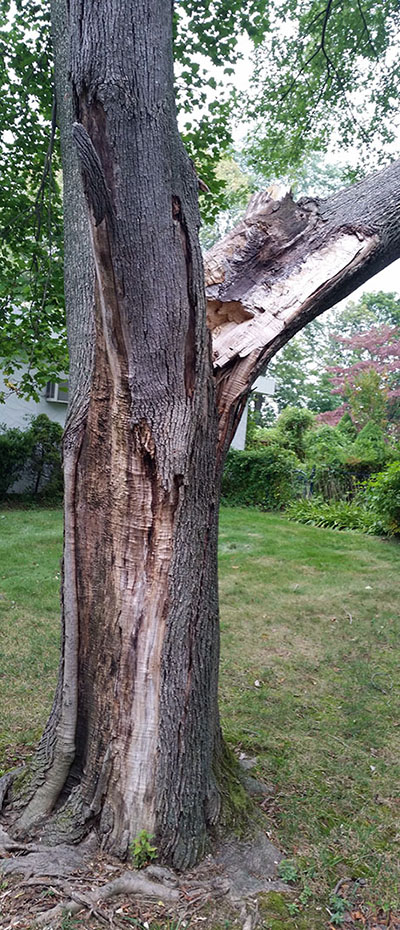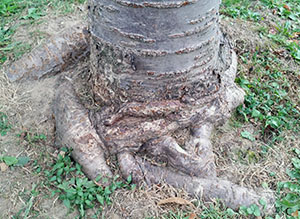How to Recognize an At-Risk Tree: An 8 Point Check-Up
ome trees fall unpredictably, but most incidents can be attributed to serious structural issues that make trees vulnerable to weather events. Residents can easily identify the signs and symptoms of key risk factors during a 30-minute, three-step inspection of their trees once or twice a year. Note: With older or very large trees, it may be safer to contact an arborist to do the inspections.
Step One: Stand away from your tree and take a good look into its branch canopy. This is best done with deciduous trees after their leaves fall. LOOK FOR:
- Dead, hanging, or broken branches. Remove any of these branches that are larger than two inches immediately.
- Is the tree is leaning? If yes, look for exposed roots or a mound of soil near the base as these signs may indicate that the tree will fall. Consult a certified arborist.
Step Two: Walk up to the tree and check trunk and branches for defects. LOOK FOR:
- Cracks or splits where multiple trunks converge. If a tree has several trunks of similar size, which converge at their base and resemble wishbones, examine where they are attached to assure that it is a strong union.
- Weak branch unions. Check branches larger than 3 inches in diameter where they attach to a trunk. A crack or split there indicates a problem.
- Cracks in trunk and/or branches. Measure the crack depth with a pencil or screwdriver. Call a certified arborist to inspect any cracks that extend beneath the bark into the wood.
- Signs of decayed wood. Inspect tree trunks and large branches for rotted wood, large cavities, and mushrooms and fungi growing on the bark surface. Check exposed roots, too, for similar signs of decay.
Step Three: Look downward and inspect the base of the tree. LOOK FOR:
- Injured roots. Examine the base of the tree trunk for signs of horizontal cuts or chewed bark tissue caused by string trimmer or rodent damage. Take measures to prevent further damage. (Rodent damage often occurs when the base of the tree is covered with vines or other vegetation. Trees are particularly vulnerable to this type of damage during the winter by rodents seeking shelter).
- Bulging or overlapping roots. Remove any soil or mulch that is mounded over the root flare at the base of the trunk to check for a flat side to the trunk. This may indicate girdling roots that constrict nutrient flow to the tree. Consult a certified arborist about this serious situation.
(This information was adapted from a presentation by Dr. Robert Polomski, Arborist and Horticulturalist at the School of Agricultural, Forest and Environmental Science, Clemson University.)



